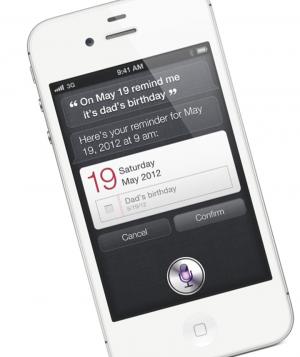Apple Passes on NFC Again–Impact Will be Muted, Say Industry Observers

As expected, Apple has decided against adopting NFC technology in its new iPhone, which the company unveiled today in Cupertino.
The new iPhone 4S will have advanced voice recognition, a high-end camera and longer battery life, but no NFC when it becomes available later this month. It makes Apple the only one of the top ten mobile phone makers not to have announced the release of an NFC phone model or the intention to do so.
Rumors have swirled around the expected features in the iPhone for many months, with a number of tech bloggers and pundits continuing to expect the smartphone to support NFC, in part to stay on par with rival Google and NFC-enabled Android smartphones. Many had earlier expected Apple to support NFC in the iPhone 4, introduced in June of 2010.
But key industry sources were casting doubt on Apple’s embrace of NFC for the next iPhone months ago.
That included the CEO of NXP Semiconductors, the dominant supplier of NFC chips to smartphone makers, who back in May said he would be “surprised” if the next iPhone supported NFC.
NFC aside, Apple’s unveiling today of its iPhone and new operating system features covering the phone and other handheld devices, the iPad and iPod, lacked the wow factor in general, said Einar Rosenberg, an NFC expert and head of U.S.-based Narian Technologies. This, along with the rise of the Android platform and the recent departure of Apple’s iconic boss, Steve Jobs, reduces the impact of Apple’s pass on NFC this year, he said.
Rosenberg said he doesn’t expect the lack of an NFC-enabled iPhone to affect the pace of rollouts of the technology on other models.
“It’s not going to be (even) a blip; a year ago, I would not have said that,” he said.
Yet, although Apple and its iOS is losing market share to Android, Apple is still hugely influential, and had it adopted NFC technology, it would have been a big boost for the technology, most observers would agree.
John Devlin, senior practice director for autoID and smart cards in London for U.S.-based ABI Research, however, said he thought the impact of Apple’s snub of NFC this year will be muted.
“Yes, it would have been a major boost, but I am not entirely surprised given Apple’s track record in introducing new features, usually enhancing the user experience rather than being first to market,” he told NFC Times. “Does this negatively reflect on NFC? No, I don’t think that it does. This (market) continues to heat up, (and) companies are increasingly launching devices and service strategies are being formulated. Instead of Apple, Google is the threat to MNOs (mobile network operators) and is acting as the spur for others to get their acts together.”
Besides Android, two other major mobile platforms support NFC or will in the near future. These are Microsoft with its planned Windows Phone 8 operating system and the BlackBerry OS from Research in Motion. NXP said recently that more than 70 NFC phones and 10 NFC-enabled tablets are in the pipeline using its chips, though most of the devices are not due out until 2012.
Devlin, Rosenberg and a number of other industry observers have said that if Apple didn’t support NFC technology this year, it would no doubt do so in the future, at the very least to enable users to sync devices and use other nonpayment NFC applications. Its numerous patent requests largely suggest it would go this route. While speculation was rife that Apple planned to enter the payment market, using NFC and its millions of iTunes accounts, its patent applications didn't really support this idea.
“Apple has a lot of IP on NFC, so we know they are going to eventually do NFC,” Rosenberg told NFC Times, predicting that Apple would incorporate NFC in its follow-up to the iPhone 4S, probably to be called the iPhone 5, which could come out in less than a year.
Update: Makers of NFC bridge technologies are no doubt planning to update their attachments to fit the iPhone 4S. They include an NFC-enabled add-on that contains an embedded secure chip from Canada-based Wireless Dynamics. U.S.-based DeviceFidelity has developed a contactless iPhone case that has a microSD-card slot. Both vendors have introduced attachments for the iPhone 4 and earlier models that have been trialed or used in small rollouts. End update.
TheSome of the observers who had cast doubt on prospects for an NFC-enabled iPhone this year speculated that Apple believes that neither the technology nor the infrastructure of contactless terminals and NFC tags is mature enough to create the compelling user experience Apple is after. It wasn’t the first to roll out other technologies it has embraced, such as touch screens and, with the iPhone 4S, voice recognition.
The new iPhone starts at $199 with a two year contract and will be available Oct. 14, said Apple, from the top three U.S. mobile carriers, including Sprint, which does not now sell the phone. The phone will also be available Oct. 14 in Australia, Canada, France, Germany, Japan and the United Kingdom. Two weeks later, the phone will be released in 22 other countries, said Apple.
Some high-end Android smartphones competing with the iPhone, including the expected successor to Google’s Nexus S 4G, dubbed the Nexus Prime, will support NFC and are due out this fall. The phone will be made by Samsung Electronics.
The NFC version of Samsung’s flagship, the Galaxy S II, also is coming out this month in North America and Europe, and such operators as France Telecom-Orange in France and T-Mobile USA plan to stock it with the NFC functionality activated. T-Mobile USA is also planning to introduce the NFC-enabled 4G Amaze from HTC this month.












